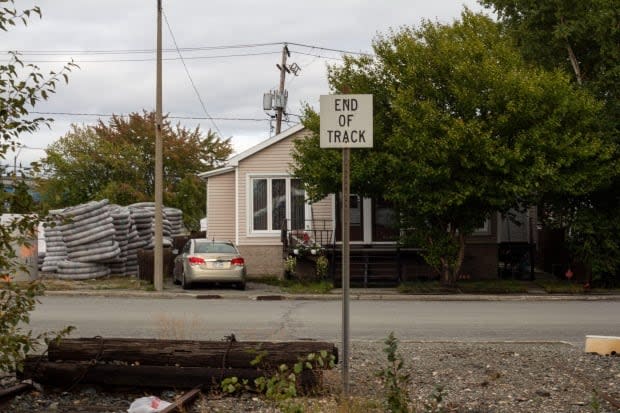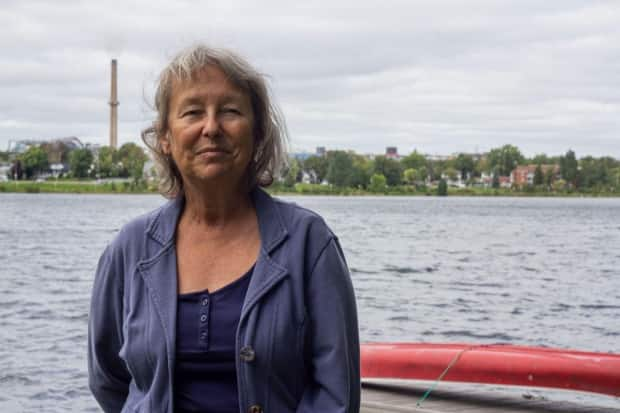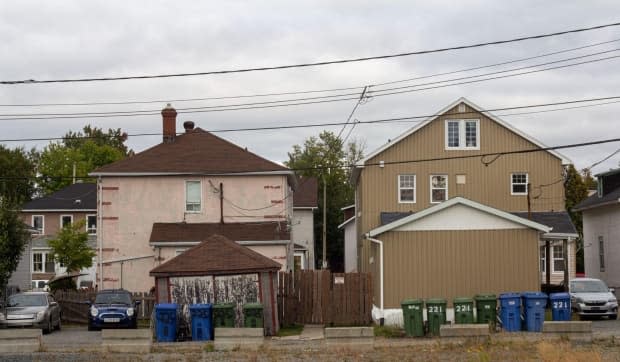Rouyn-Noranda, Que., residents torn between hometown loyalty and fear of toxic emissions

Félix B. Desfossés remembers growing up playing in red and orange mud behind a park in the Sacré-Coeur neighbourhood in Rouyn-Noranda, Que.
"We basically grew up playing in that stuff in solid form," he said.
That stuff was mining waste from the Horne Smelter next door.
The smelter is a landmark in Rouyn-Noranda and its two chimneys loom over the city. For some residents, it represents a threat they are keen to escape by moving away. For others, it is a challenge they will not back down from as they fight for cleaner air for their families.
Prospector Edmund Henry Horne discovered copper and gold in the area in the early 1900s. That led to mining and the development of the town of Noranda, which later merged with neighbouring Rouyn.
The smelter was built in 1926, long before environmental norms were established. It is owned now by Glencore Canada, whose Swiss parent company produces and markets a range of metals and minerals worldwide.
Desfossés, 39, is so deeply attached to his hometown and its history that he named his son after the mine's founder.
"I decided to call my son Edmund because of Edmund Horne. Now, even his name reminds me of this whole situation and of some decisions we made in our lives that would have been different if we had the information that we have now," said Desfossés.

A study released in June by Quebec's Institute of Public Health (INSPQ) confirmed higher rates of cancer and pulmonary diseases are directly linked to high arsenic and cadmium emissions in Rouyn-Noranda due to the Horne Smelter.
The study also revealed more health problems linked to those emissions, such as low birth weight for babies, lower life expectancy, heart disease and diabetes.
It wasn't the first red flag. In 1993, Environment Canada and Health Canada issued a warning to the Horne Smelter and declared it necessary to have studies on lung cancer in the Notre-Dame neighbourhood of Rouyn-Noranda.
The Horne Smelter increased its arsenic emissions.
A history of emissions and a historic exemption
Quebec's provincial norm for arsenic emissions is an annual average of three nanograms per cubic meter, but the Horne Smelter is excluded.
In 2000, an INSPQ study showed emissions were an annual average of 1,000 nanograms per cubic metre.
Horne has been allowed to surpass norms because the Quebec government gave it a historic exemption and is allowing it to take a gradual approach to reducing its emissions while it updates its technology to be meet stricter standards.
By 2007, the Horne Smelter's emissions were limited to an average of 200 nanograms per cubic metre. In 2021, the limit dropped to 100 nanograms per cubic metre — still 33 times above the provincial standard.
Those figures are always annual averages, as Quebec does not regulate daily emissions of arsenic.

Desfossés says he didn't know what he was breathing in. He, like many residents, wasn't aware of how severe the pollution in Rouyn-Noranda was.
He deeply regrets moving back there to raise his son, after living in Montreal for 12 years.
"I should have known … that it was that toxic around here but now it's too late," Desfossés said. His son is 10 now and has lived in Rouyn-Noranda since he was six months old.
Now, Desfossés says he wants to leave the city he loves, for his son's future. He's already started packing.
"I don't want [my son] to spend five more years of his childhood and development breathing this. If he has cancer at 20, how am I going to deal with that?" said Desfossés.
Should I stay or go?
Many parents face a similar dilemma. Jennifer Ricard-Turcotte was born and raised in Rouyn-Noranda and says she's deeply attached to her city.
She's raising her children, aged seven to 17, there but she is beginning to question her bond to her hometown.
"If you attach yourself to an environment that isn't healthy, is this attachment healthy?" she asked.
Isabelle Fortin-Rondeau was born and raised in Rouyn-Noranda and is raising her children there. She said she'd rather not have to leave — it would feel like giving up.
"We love our city and it doesn't belong to Glencore. It belongs to us and to everyone who lives here. Our city deserves better than what it has become today," said Fortin-Rondeau.

Clodel Naud-Bellavance, a family doctor, has a six-year-old daughter who attends the Notre-Dame-de-Protection elementary school — 500 metres away from the Horne Smelter.
"As a mother, I am worried," she said. " I don't like having to question my child's health when she attends school in Quebec in 2022."
But Naud-Bellavance doesn't plan on leaving her hometown anytime soon. "I still have a lot of hope for change," she said.
New targets, new opposition
The Horne Smelter and Quebec's Environment Ministry recently proposed a new joint target: to reduce arsenic emissions to an annual average of 15 nanograms per cubic metre by 2027. The smelter, the government and residents have until November to come to an agreement.
Many residents are fighting this new action plan.
At a recent meeting where residents of the Notre-Dame neighborhood were invited to ask questions of Quebec public health officials, more than 150 people showed up and Marianne Saucier, who is raising two teenage boys near the smelter, was one of them.

She says she wants "to try to change things, for the provincial standard to be respected, it's essential. I can't live like this without doing anything."
Nicole Desgagnés is one of the spokespersons for the citizens committee group called ARET, a French acronym that stands for stopping toxic emissions in Rouyn-Noranda.
She joined in 2019 when a study found up to four times higher rates of toxins in children's and adults' fingernails in Rouyn-Noranda compared to those measured in the nearby town of Amos.
"We do a lot of research, a lot of reading. It's almost a full-time job for many of us," said Desgagnés.
She's lived in the city since 1981 and raised her four children there. Her grandchildren now live in the Sacré-Coeur neighbourhood. Desgagnés said she believes she's been overexposed to toxins for more than 40 years.
"The days when the sulfur was in the air, we couldn't stay outside," she said.
Desgagnés said she hopes her family won't have to move away from Rouyn-Noranda but that they're exploring their options.

The Quebec government has announced it will work on decontaminating soil this fall. Desgagnés says decontamination has been going on since the 1980s but is pointless if emissions continue.
"It gives the impression of doing something but it's really not acceptable and [it's] insufficient," she said.
Desgagnés doesn't want the smelter to shut down but she does wants it to respect the provincial norm and for there to be regulations concerning what materials are allowed to be processed there.

Importing heavy metals
Glencore Canada holds federal permits to import antimony, arsenic, cadmium, copper, hexavalent chromium, lead, mercury, organic cyanides, selenium, waste from surface treatment of metals and plastics and waste from production of photographic chemicals and processing material.
The smelter is authorized by the province to treat the waste.
The Horne Smelter currently handles 710,000 tonnes of copper concentrates and 105,000 tonnes of recycled products of which 50,000 tonnes are electronic waste.
The smelter will not disclose how much arsenic those concentrates contain, saying that information is covered by non-disclosure agreements with its suppliers.

A recent report from Radio-Canada revealed that the Horne Smelter has received, in five years, more than 340,000 tonnes of hazardous industrial waste, from as far away as Russia, Singapore and Brazil.
Rouyn-Noranda's image problem
"People are afraid that this will break the image of our city," said Desgagnés. But she says it's more important for people to be open and talk about what is happening.
An online consultation for residents began on Sept. 6 and runs until Oct. 20 to allow residents to weigh in on government rules for Horne until 2027.
On Sept. 23, there will be a march to demand the provincial norm of three nanograms per cubic metre be respected.
"When we will show that we are a region that stands up and doesn't accept this, we could solve this problem," Desgagnés said.

